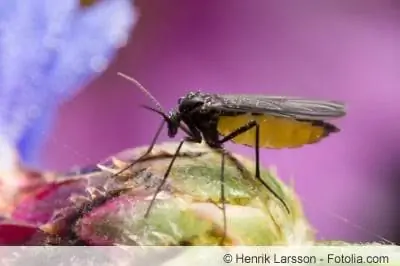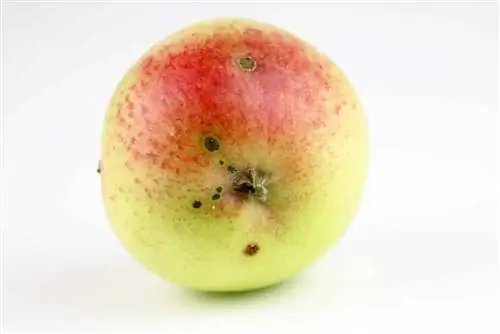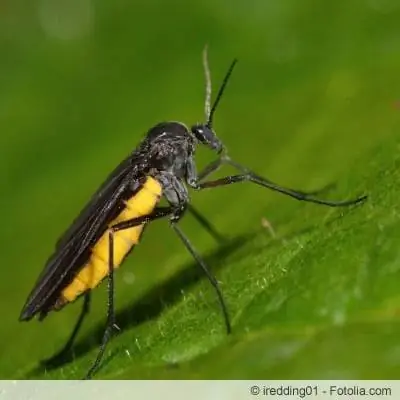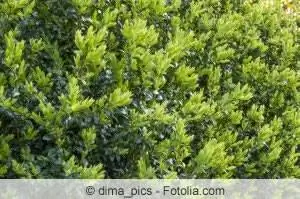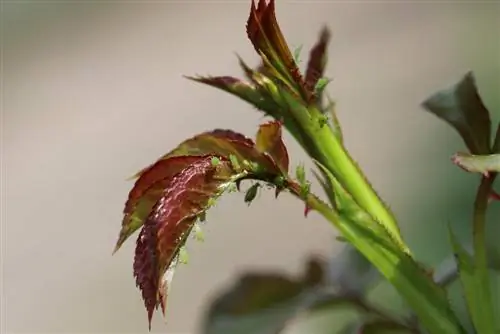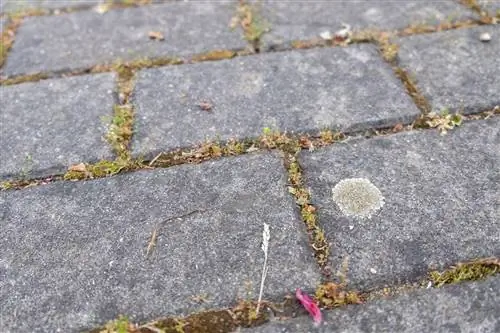- Author admin [email protected].
- Public 2024-01-31 11:14.
- Last modified 2025-06-01 06:48.
A few fungus gnat larvae are rarely a problem; they belong in the earth like plankton in water. The soil is more of a problem, and a mass proliferation of fungus gnat larvae needs to be prevented; You can find out more about both problem areas below:
Identifying fungus gnats and fungus gnat larvae
You see adult fungus gnats, small dark flies on a distinct zigzag course, but you don't see them for very long because they only live a few days. These days the fungus gnats have nothing on their minds other than reproduction, and in addition to the pleasant side, that includes laying as many eggs as possible - in the soil of your houseplants.
The horror with the flying adults (adult fungus gnats) will soon be over, you just don't know for sure whether the great fungus gnat horror is now growing in your flower pots and you will have to break out into hectic fungus gnat control.
How to find out the extent of the threat:
Sickness gnat larvae hatch 4 to 8 days after the female fungus gnat lays the eggs, but are initially transparent and impossible to see in the potting soil. When they are “big”, it doesn’t get much better, still glassy, as long as a match head is wide, and the famous black head capsule - oh stop it, it’s a dot on the line the width of a match head, and whoever looks at it his potting soil already under the microscope? Normally sighted people need other clues, and these are available:
- Mucus threads with a silver shimmer on the substrate surface=fungus gnat droppings
- Tiny “lint” on exposed roots=fungus gnat larvae
- Tiny “lint” on the surface of completely submerged pots=fungus gnat larvae gasping for air
Of course everything is more visible when the infestation is really bad, but if the larvae “go to the toilet” further down in the pot, there may be no mucous threads at all. And very young cuttings can be damaged by exposing the roots or by giving them a full bath.
If you suspect a fungus gnat larval infestation, the best you can do is sink a strip of paper into the growing pot at a safe distance from the roots, through a stiff straw for example, the larvae should be identifiable by the feeding marks on the paper. You can do that But then in principle let it go and hope that this generation of fungus gnat larvae finds enough organic matter in the growing soil to not completely eat up the roots, because to combat them you would also have to expose the roots.
Combating suspicion

It should be possible to combat suspicion with sulfur-coated matches if you can assume that the plants can tolerate sulfur (actually a main nutrient and important for the absorption of nitrogen, but some potting soil is deliberately made nutrient-free):
- Putting sulfur-coated matches upside down into the ground kills fungus gnat larvae
- Even more effective: dissolve 1 pack of match heads in a glass of lukewarm water
- Dilute with twice the amount of water
- Pour on the potting soil
If you have doubts about enriching nutrient-free potting soil with sulfur, only hope and more caution next time will help.
For more robust plants, you can simply wait until you can see the larvae with the naked eye, now 6-7 mm long, gray-white with a black head capsule that is now just visible, then they are almost ready to leave, at the most you can replace the top layer of soil with soil that is guaranteed to be free of fungus gnats or at least low in fungus gnats and otherwise wait until the big excursion before combating it.
Fighting fungus gnat larvae
If evidence such as mucus threads indicates that the fungus gnats, which appear in tolerable quantities every year, want to become a population of millions this time, or you can already see masses of fungus gnat larvae with the naked eye (or there are already masses of fungus gnats flying around), combating them is a must currently exploding fungus gnat population announced:
1. Decimate flying fungus gnats
- Install lots of yellow stickers before the trip
- On the plants, on the light sources, in places with drafts
- Homemade yellow boards save money
- Guaranteed harmless to pets with natural ingredients
- And to be creative in the format
- Open the window when seeing plants on the windowsill
- Waving mourning gnats outside with a newspaper
2. Greenhouse and Co.: Support through beneficial insects
- The trade now offers various beneficial insects to biologically decimate fungus gnats
- Nematodes called Steinernema feltiae
- Predatory mites called Hypoaspis miles
- Both take active action against larvae
- Let other insects fly in the greenhouse
- Most of them are enemies of fungus gnats
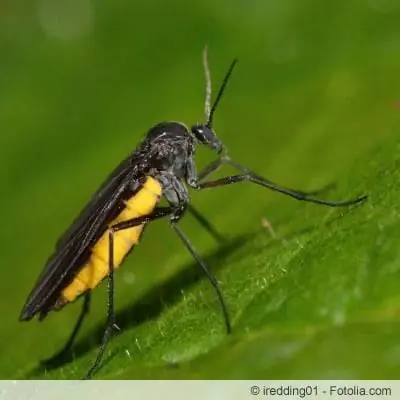
3. Destroy eggs laid in the houseplant soil despite level 1
- Wait around 10 days after the first fungus gnats go out
- Then repot houseplants in fresh soil
- Remove old soil from the roots without leaving any residue
- Wash roots carefully in the shower
- Wash the flower pot warmly and thoroughly
- Add a little soda or 1 tablet of Chinosol per 2 liters of water
- Fill the flower pot with (almost, depending on the material) boiling water, let it cool down
- Dispose of old soil in residual waste
- Planting houseplants in fresh soil
4. More support
- Carnivorous plants eat adult fungus gnats
- There should be one per window sill
- Some yellow signs remain and indicate renewed infestation early on
5. Prevention
First means checking care errors; Once these are fixed, there is still a lot you can do to prevent fungus gnats from living on your houseplants:
- Water correctly, not too much and always only after the surface has dried
- Pour over the coaster from below if possible
- But never leave the coaster full of water for a longer period of time
- Mix the potting soil yourself if possible
- Cover the surface of the earth with fine quartz sand, approx. 3 cm
- Put 3 cm thick quartz sand into the coaster
- Store leftover purchased potting soil in a cool and dry place
- Seal opened packages airtight
Living with a few fungus gnats
Sad gnats have conquered the whole world, feel particularly comfortable in the German climate and are spread across the globe in hundreds of species thanks to the global movement of goods. The imported fungus gnats don't survive our winters outdoors, they like the climate in our rooms even better.
If you approach the “dealing with the fungus gnats” with a level of energy that is kept within a rather relaxed framework, a few fungus gnats could occasionally find their way into your apartment and your flower pots. Not only is this not a problem, neither for your houseplants nor for the people or the hygiene in your apartment, but you can even live quite well with a few fungus gnats.
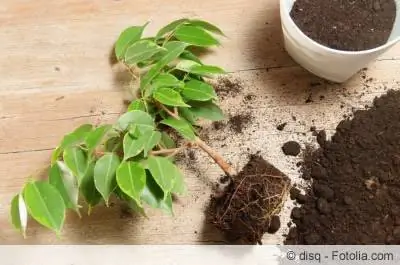
You only have to tolerate adult fungus gnats with staggering flight for a few days (by the way, the zigzag course during flight is said to be because fungus gnats simply cannot fly very well). You can wave half of the team through the open window into the distance to view the bride, while most of the other half land on the yellow stickers that were immediately installed. If a few remaining female fungus gnats are still able to smuggle a few eggs into your potting soil, the following happens: The hatched larvae first eat up any remaining organic material in your flower pots before they go to the plant roots. If you keep your plants in self-mixed soil with lots of organic components, the larvae will find enough of it until they turn into fungus gnats again and stop eating. The organic material plastered by the larvae also includes fungal spores in the potting soil An occasional cleaning in this regard is extremely good for many houseplants.
The much-described, terrible fungus gnat infestation is a worthwhile article topic, but for people who have already discovered the diversity of nature, it is not a horror, but rather normal.
Sweed gnat-free plant culture
If you grow rare young plants whose roots should not see a single fungus gnat larva, a little more effort is required, the following options are open to you:
1. Own potting soil
If you have an ecologically well-balanced garden, you should put together your own potting soil using ingredients that such a garden offers:
- 1/3 compost, very ripe
- 1/3 cleaned and washed (quartz) sand
- 1/3 garden soil with rock dust
- Ev. some charcoal to prevent excessive fungal growth
- Sift and mix everything well
You don't necessarily need charcoal against fungi if you have a compost that is actually mixed from many plants, because the types of fungi in the compost produce antibiotics that kill harmful fungi and bacteria. The Institute for Plant Diseases at the University of Bonn found active ingredients against apple scab and lettuce rot, the University of Exeter found antibiotics against root rot of beans, white rot of onions, potato brown rot, root and stalk rot, the Institute for Agricultural Research of Illinois found fungi against insecticide-resistant flies - who knows what Your compost has everything to offer.
If the plants are later to be placed in pots with self-mixed soil or in the garden, such not completely germ-free potting soil is the best preparation for the soil that awaits the young plants later. If the rare young plants are later given a special soil, you can sterilize this growing soil (see just under 2.), but you will also kill the beneficial ingredients in the compost.
2. Purchased potting soil
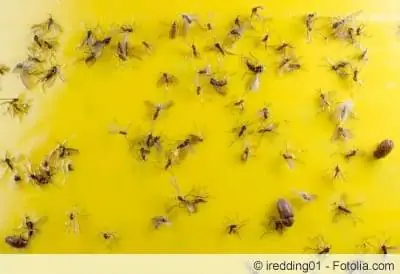
Purchased potting soil (also growing soil) is often riddled with fungus gnat larvae (you can read exactly how fungus gnats spread across the world in the article “Which remedies help against fungus gnats”). In most cases it is not really soil, in the sense of a living organism capable of defense, but rather a mixture of (waste) materials (including environmentally damaging peat) whose material consistency is suitable for storing water and providing support for root tissue. In the article “Which remedies help against fungus gnats” there is also a little insight into what can be put into potting soil (and whatever can be put in it will be put in it), so experienced gardeners mix their potting soil themselves if possible.
Growing soil with the LUFA seal (seal of the agricultural examination and research institutes of the federal states) guarantees freedom from germs, but no other composition of the soil. So if you read as a tip to prevent fungus gnats that you should sterilize the soil in the oven or microwave, you can do that: "roast" in the oven at 200° for half an hour or "on full steam" for a quarter of an hour. let it spin in the microwave. The larvae are then certainly killed, as are every other useful microbe in the soil, but there probably wasn't much going on in the soil you bought anyway.
An earth that can call itself earth and in which fungus gnats do not thrive does not exist; it would be somehow illogical, because fungus gnats are among the most important “producers of soil”.
If you want to grow your plants in a “growing medium” (this is the name of the commercial “soil” mix, the misleading term “soil” is probably banned there) that imitates “soil”, but exactly cannot guarantee living functions - it is actually not very logical to first buy this substrate and then kill it completely. Then you could also grow your plants in sterile substrates that you put together from your own waste at no cost (and you also save the energy for the soil in the oven):
3. Novel substrates
You are free to grow cultivations or houseplants in all kinds of substrates; it does not have to be a commercial growing medium with possibly dubious ingredients; but also no garden soil if there is no garden in front of your door. There is currently a powerful movement aimed at urban self-sufficiency with unpolluted plants. Whenever this cultivation is to take place in an urban living environment, real soil is less suitable than if someone in a rural area has a garden in front of their door.
Plants are grown in a wide variety of substrates, including waste materials, but usually with less disgusting materials than body remains from factory farming - because this whole movement is part of a concept that counteracts the escalating madness of our modern world would like and so e.g. B. is also against factory farming.
In the field of urban gardening, people generally experiment with the cultivation of plants. Singapore, the country with the highest population density in the world with one high-rise building next to the other, already covers almost 10% of the fresh vegetable needs of its 5.5 million inhabitants with vertical farms such as “Sky Greens”, and a high-rise building can do just that lobservateurdumaroc.info/ wp-content/uploads/2013/09/singapore.jpg" />
Hydroculture is growing plants in inorganic substrates such as the well-known expanded clay, but also gravel, bas alt, perlite, pure sand, charcoal, coconut fiber or rock wool; The Nutrient Film Technique (NFT) and Deep Water Culture (DWC) reduce the substrate even further, aquaponics breeds fish and crops with little substrate and in a closed circuit, aeroponics does not require any substrate at all.
Anyone who studies how plants grow “without soil” simply learns a lot about the growth of plants as a home gardener with a garden in front of their door. If the house with a garden in front of the door becomes a city apartment due to a job, this home gardener may be one of the first to harvest their daily vegetables from the bed on the facade, which they pull up in front of the kitchen window if necessary (vertical methods are said to be up to 100% compared to traditional soil cultivation). yields ten times higher).
You no longer have to fear fungus gnats, which starve to death in inorganic substrates or soilless cultures.
No more chemicals allowed against fungus gnats
Because fungus gnats are comparatively harmless to useful, can be kept in tolerable populations comparatively well without chemicals and German citizens are increasingly up in arms against “chemical contamination”, only products with neem (herbal active ingredient from the neem tree) approved.
Things are also getting thinner in commercial cultivation since approval for the active ingredient thiacloprid was revoked for all applications except ornamental plant cultivation in greenhouses because it was dangerous to bees, see www.bund.net/nc/presse/pressemitrichtenen/detail/artikel /bund-gewinnt-vor-gericht-gegen-bayer-im-streit-um-bienengefaehrlichkeit-von-pestiziden, www.bvl.bund.de/DE/04_Pflanzenschutzmittel/01_Aufgabe/02_ZustellungPSM/01_ZugelPSM/03_Widerrufe/psm_ZugelPSM_widerrufe_node.html.

